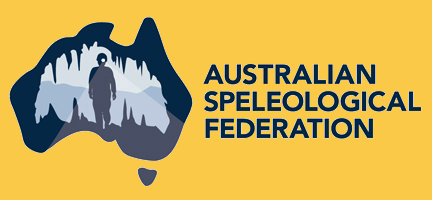


 |
  |

Welcome to the Australian Speleological Federation's Nullarbor Special Interest Group
As A/Prof John Webb once said(1), the Nullarbor is flat but far from
boring!
The Nullarbor Plain is a vast karst area in the middle lower half of
Australia, an uninterrupted expanse of relatively young, immature
limestone, which makes up one of the largest, flatest plains in the
world. It is riddled with caves, many of them small blowholes, some of them massive,
and is home to one of the longest underwater caves in world. For the
most part the landscape above these caves is desert, but it is not low
rainfall alone which is responsible for this as this chalky karst is notoriously
porous and quickly drains away all of the water which falls on it. It is an
area which is at once incredibly tough, and incredibly fragile.
Cavers have been exploring this area for decades, searching for new
caves and discovering new fossils and world-record cave dives along the
way. The Nullarbor caves are an historical vault, an immense wealth of
information on the geological, biological and anthropological
development of Australia, only a scarce fraction of which has been
uncovered. Because of the remoteness of the area, long travel times and
the difficulties and costs associated with exploration, even the most
dedicated Nullarbor explorers have barely scratched the surface.
OCT
2025 Update - if you are seeking to
run a trip to the Nullarbor please email
asf.caves.nsig@gmail.com
regarding changes to access requirements. |